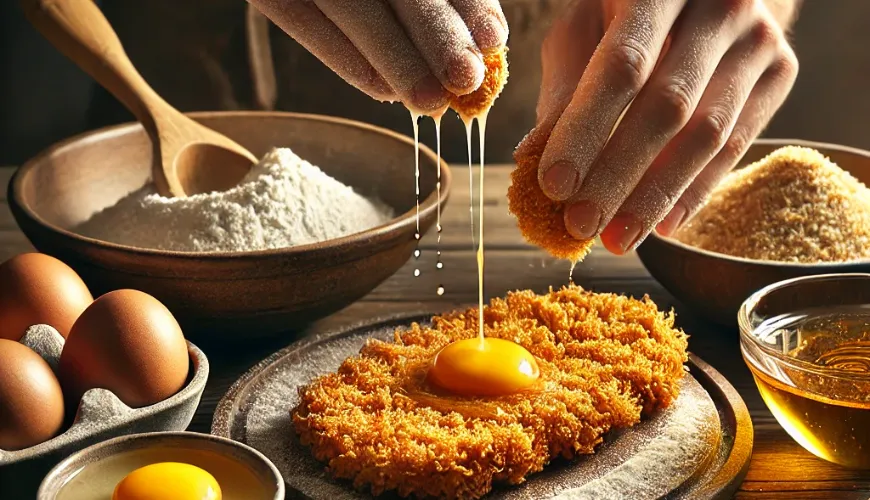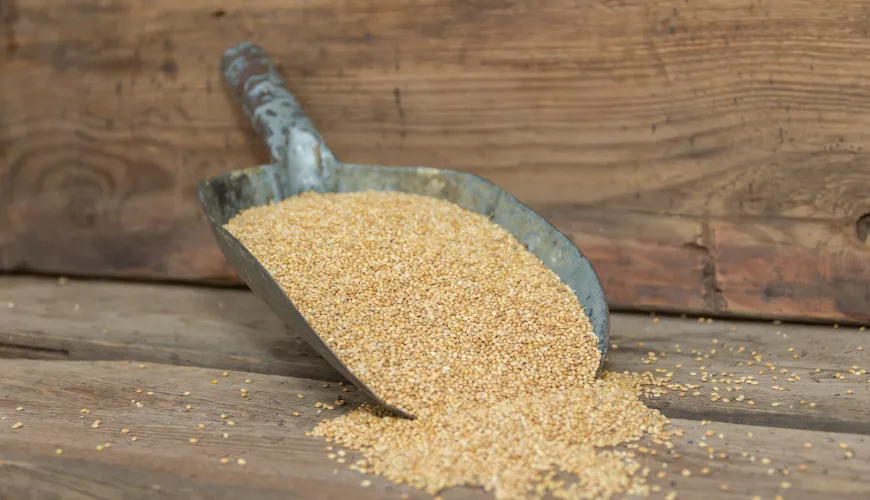
The secret to a crispy coating lies in careful breading.

How to Achieve the Perfect Breading: Step-by-Step Guide to an Irresistibly Crunchy Coating
Breading is one of the most basic cooking techniques, yet not everyone can achieve a result that can be deemed perfect. A crispy and evenly golden crust, which envelops meat, cheese, or vegetables, is the product of a precise process and adherence to several principles. Although it may seem that you just need to coat the ingredient in flour, egg, and breadcrumbs, in reality, each detail plays a crucial role.
Preparing Ingredients as the Foundation of Success
Before you embark on breading, it's important to prepare all your ingredients. The quality of the initial ingredients affects not only the taste but also the consistency of the final dish. Meat should be cut into even slices and possibly lightly pounded to achieve the optimal structure. As for cheese, it should be thick enough not to melt during frying. Vegetables, such as zucchini or mushrooms, should be thoroughly dried before breading, as excess moisture could prevent the breading from adhering properly.
How to Properly Coat with Flour
Flour is the first step that must not be underestimated. It ensures the adhesion of the egg and also lays the groundwork for the even bonding of all layers. When coating with flour, it's important to ensure that the ingredient is covered on all sides, but also to gently shake off the excess flour. If thicker layers remain, it could lead to undesirable lumps that would disrupt the structure of the final coating.
Egg as the Key Binding Element
The second layer, formed by egg, is crucial for the breadcrumbs to adhere well to the ingredient. It is best to thoroughly whisk the egg with a fork or whisk before use, ideally with a pinch of salt or a bit of milk. This makes its consistency smoother and allows it to adhere better to the surface. During this coating step, ensure that the egg covers the entire ingredient evenly and that no dry parts are left. Excess egg should be allowed to drip off lightly so that the breadcrumbs are not applied too thickly in the next step, which could create unwanted clumps.
Breadcrumbs for Perfect Crunchiness
The final layer, which gives the schnitzel or other dish its characteristic crunchiness, is the breadcrumbs. When applying them, it is good to lightly press the ingredient into the breadcrumbs to create a firm yet even layer. Some chefs prefer using finer traditional breadcrumbs, while others opt for coarser panko breadcrumbs, which create a noticeably crunchier texture. It is important that the breadcrumbs are not applied too thickly in some areas, as this could create hard, even burnt parts during frying, which would spoil the final taste.
Frying as the Final Step
Even the best breading will not yield a good result if frying is not done correctly. The key to success is using oil with a high smoke point – sunflower or canola oil is most commonly used. The oil temperature should be between 170 to 180 °C. If the oil is too cold, the breading will absorb too much fat and feel greasy, whereas oil that is too hot will cause the coating to burn quickly while the inside remains raw. During frying, it is best to work with a smaller number of pieces at a time to maintain a stable oil temperature. Each piece should be turned during frying to achieve an even color and the right crispiness.
How to Recognize Well-Prepared Breading
A perfectly prepared coating should be crispy, golden, and evenly cover the entire surface of the ingredient. If it peels off in some areas or has too light a color, it may indicate that the breading technique was not followed correctly or that the oil was not at the ideal temperature. Before serving, it's advisable to let the finished dish rest for a moment on a paper towel, which will absorb excess fat.
Although breading may seem like a simple task, the right technique and careful execution of each step play a crucial role. If all the rules are followed, the result will be worth it – a perfectly crispy, delicious, and irresistible breading that everyone will enjoy to the last bite.

